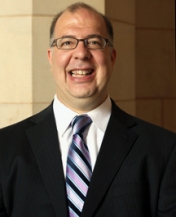
Shanise Taylor
With its eclectic mix of people, one-of-a-kind restaurants, and year-round gorgeous weather, Austin is the perfect back drop for Healthy Teen Network’s 35th Annual Conference. Having been to Austin previously, I have several tips and recommendations on eating and sightseeing your way through downtown—all within walking distance of the conference site!
Let’s start with the amazing host hotel for this year’s conference, the beautiful Hyatt Regency Austin. Located on the majestic Lady Bird Lake, it boasts one of the best views in Downtown Austin. Because Lady Bird Lake has a sprawling 10 mile hike and trail, it’s an always bustling host to many fitness and other recreational activities. Fun Fact: Lady Bird Lake was named in honor of former First Lady, Lady Bird Johnson. At one time she even turned down the Lake being named after her. Posthumously, Austin’s City Council changed the name to honor the late First Lady’s dedication to beautifying and making the lake’s shoreline a place of recreation.
Need a bit more excitement? The Ann W. Richards Congress Avenue Bridge is the site of one of the best natural spectacles known in the United States. Affectionately known as the “Bat Bridge,” the Congress Avenue Bridge is home to one of world’s largest Mexican Free-Tailed bat colonies. Emerging at dusk to feed themselves, this convergence of bats blankets the shoreline and crosses Lady Bird Lake every evening. It’s a natural wonder when you see how uniformly and quickly the bats move. There are two ways to experience this phenomenon: you can either stand on the bridge and watch from above as the bridge slightly shakes while the bats move about, or you can experience it from below the bridge to experience a blacking out of the sky. Either way, it’s a one-of-a-kind natural wonder. Normally flights happen around 8:00 to 8:30 pm, but for more specific times, call the Bat Hotline (not to be mistaken for aid from Batman) at (512) 416-5700 ext. 3636.
Now that we’ve gotten a little bit of nature (not to mention, free!) activities out of the way, how about some food and entertainment? No matter what your taste buds desire, you can probably find it on, or just off, Congress Avenue. From BBQ to Tex-Mex, downtown Austin has it covered. There are quite a few establishments that boast good food and a cool ambiance, but I’ll highlight just a few.
Hop Doddy: With their delectable choice of craft burgers and beers, Hop Doddy is a great choice for savory bites. Supportive of the local agriculture, this burger lover’s dream provides you with a taste of Texas and, more specifically, Austin!
Iron Works BBQ: Burgers not your thing and looking for some authentic Texas BBQ? Iron Works BBQ may just be the place for you. Eighteen minutes walking (or five minutes by cab) from the hotel, this restaurant boasts a vast array of delicious barbecued meat. If you want to try your own hand at recreating some of their flavors when you get back home, choose from a vast array of spices, sauces, and rubs available for purchase from the store.
Freeb!rds World Burrito: Want to try some local Tex-Mex? This place will tickle your fancy, as well as fill your belly. Within an eight-minute walk from the hotel, Freeb!rds’ menu is a veritable feast of burritos, custom-built tacos, and nachos. With such unique signature items like the Monster Burrito (need you ask?), Death Sauce (“Stop cryin’ like a baby–this ain’t for the weak!” they warn), and Queso (lots of melted, cheesy goodness… with a little homemade zip), you’re liable to run and not walk to this funky dining establishment. (For the health conscious looking for lighter offerings, they also have a nice selection of salads.)
By now, you should be happily full and singing the sweet praises of Austin’s wonderful dining selection. Are you up to walking off some of that food and look for trinkets and other keepsakes? Why not stop at Texas National Outfitters (TNO)? Located within walking distance of Hop Doddy, this one-stop shop of local flare has you covered. Be it boot-shaped beer cozies to actual one-of-a-kind cowboy boots, TNO has all your Texas needs. Pricing here ranges from reasonable to pricey.
Still wandering and looking for something to do? 6th Street (Sixth Street) is known to be Austin’s Entertainment Center. Nestled between Congress and Interstate Highway 35, this popular destination has something for everyone, from live comedy to karaoke and live music, Sixth Street is easily Austin’s most eclectically diverse entertainment area. Also conveniently located along this seven street stretch are numerous bars and lounges for those who like to explore the nightlife.
With Healthy Teen Network’s Conference mornings starting very early, I know by now, you’re craving some sleep. But how about some dessert first before you head back up to your room? Stop by Southwest Bistro. Located on the second level of Hyatt Regency Austin’s beautiful atrium view of the skyline, take in the night, have some coffee, and be sure to order the Roasted Pineapple Cake. (And if you’re craving a late night snack, the tortilla soup at SWB is also a must try item!)
Looking for other awesomely fun and interesting things to do? Be sure to visit Austin’s helpful website. It’s chock-full with information to round out your visit! We’d love to hear your recommendations for other things to eat, see, and do in Austin, so feel free to share your favorites in the comment section below.
Hope to see y’all in Austin this October!
Shanise Taylor is the Executive and Communications Coordinator at Healthy Teen Network.




You must be logged in to post a comment.